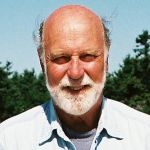 (HOST) Recently, John James Aubudon’s rare masterpiece, "Birds of America," sold for more than $11 million dollars, setting a record for printed books at auction. This inspired Commentator Tom Blinkhorn to look into Audubon’s New England connections.
(HOST) Recently, John James Aubudon’s rare masterpiece, "Birds of America," sold for more than $11 million dollars, setting a record for printed books at auction. This inspired Commentator Tom Blinkhorn to look into Audubon’s New England connections.
(BLINKHORN) Audubon actually spent very little time in New England, with the exception of Massachusetts and the Maine coast. But he did have a fascinating, often uneasy, relationship with a famous New Englander, Dartmouth college’s most illustrious alumnus, Daniel Webster, class of 1801. In fact, today, prominently displayed in a specially constructed, glass-topped mahogany cabinet in Dartmouth’s Rauner library in Hanover you can see one of the original copies of "Birds of America," It was ordered by Webster from Audubon in 1836 when the total cost was $1,000.
Three of the original volumes are there, each containing large, 30 by 40 inch, life-sized paintings of birds printed from engraved copper plates. How this treasure come to Hanover – and why only three of the four volumes of the original folio – is a good story.
Audubon was born in Haiti, in April, 1785. He was the son of a French slave trading sea captain and his local mistress, who died shortly after giving birth. The father took the boy back to France where he was embraced warmly by the sea captain’s wife.
In 1803, at age 18, young Audubon arrived in New York, made his way to Pennsylvania where he married a local girl, became a naturalized American and, inspired by a prominent Philadelphia ornithologist, embarked on his life’s work. For the next 30 years until his death in 1851, he raced from Louisiana to Labrador, drawing pictures of every bird and beast he could find. He had them engraved in London and started selling subscriptions to the "Birds" book to wealthy people in Europe and America.
Daniel Webster and John James Audubon seem first to have met at a Boston dinner party in 1832 when Audubon was 47 years old and already famous. Webster, three years his senior, was the United States Senator for Massachusetts and later became United States Secretary of State under three Presidents. The two men apparently hit it off immediately.
Webster himself was something of a naturalist. Plate 332 in the "Birds" book, depicting a Pied Duck, was drawn from a pair of ducks Webster sent to Audubon. And Webster was one of Audubon’s earliest American subscribers. The first 300 plates – all that had been issued up to that time – were delivered in three volumes to Webster’s Marshfield, Massachusetts country estate in 1837. However Webster – who was notoriously tardy in meeting his financial obligations – failed to pay up, despite repeated reminders. As late as 1842, Audubon was still pressing him for the balance due. That experience may explain why Webster never acquired the fourth volume of "Birds."
The three volumes remained in Webster’s library at Marshfield throughout his lifetime. They were later sold to the Haverhill, Mass. public library where they remained until 1965 when the set came to Dartmouth through a gift in memory of Andrew B. Foster, class of 1925.